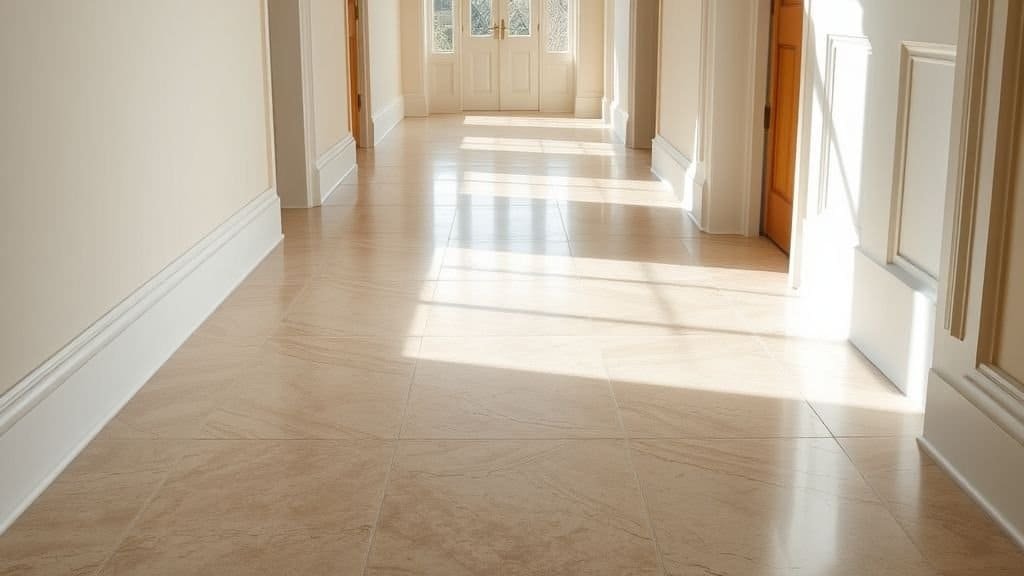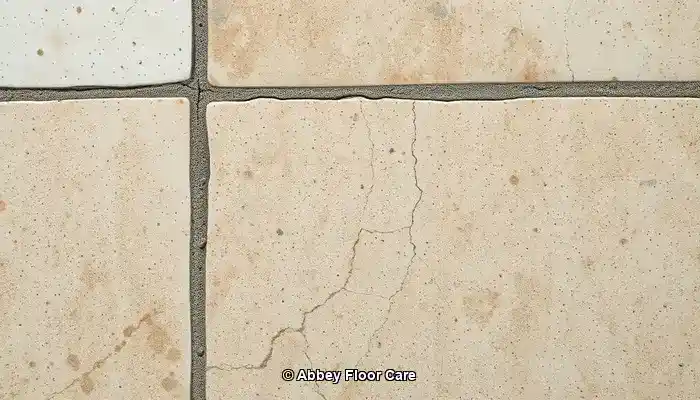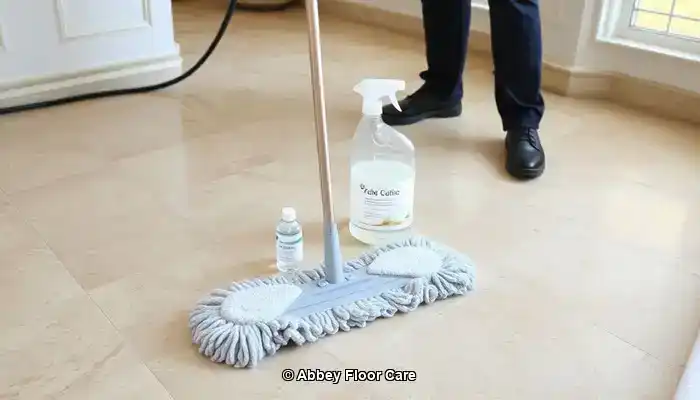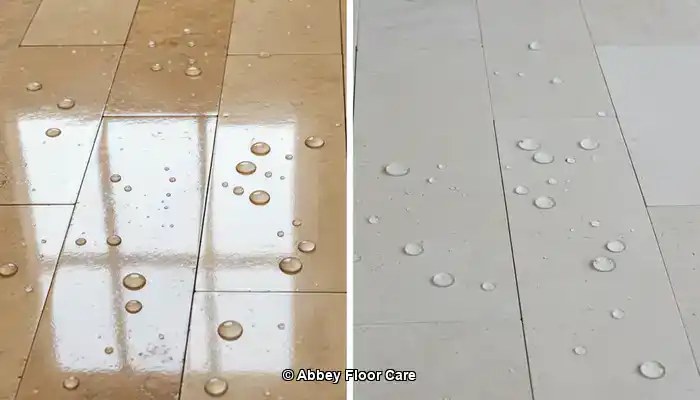



Travertine, a naturally occurring stone, holds a special place in the hearts of homeowners and builders across the UK. Its unique aesthetic appeal and versatility make it a popular choice for both indoor and outdoor applications. But to fully appreciate this material, you must understand its various forms, sources, and the factors that can contribute to its deterioration, especially how to stop travertine from getting dirty again.
 Fila Pro Floor Cleaner |  Hg Terracotta Clean & Shine 1Ltr P86 |  Vileda H2PrO Spin Mop System |
Travertine comes in several varieties, each offering distinct characteristics that cater to diverse design preferences. The most commonly used types in UK homes include classic beige, cream, and silver travertine. Classic beige travertine is favoured for its warm, inviting hue that complements traditional interiors beautifully. Cream travertine, on the other hand, offers a more contemporary look, appealing to modern aesthetics with its light, airy feel.
Silver travertine, with its cooler tones, is particularly popular in urban settings, where it adds a sleek, sophisticated element to contemporary designs. Understanding these varieties is crucial when considering maintenance strategies. The differences in porosity and surface texture among these types can affect how they collect dirt and stains, making it essential to choose the right cleaning products and preventative measures tailored to each type.
In the UK, travertine is primarily imported from countries renowned for their high-quality stone, such as Italy and Turkey. These regions produce travertine with distinct colours and patterns, adding to the unique characteristics seen in British homes. Some local quarries also produce travertine-like stones, although they may not match the quality and aesthetic appeal of imported varieties.
When selecting travertine for a project, it is vital to assess the stone’s source and quality. High-quality travertine ensures longevity and better resistance to dirt accumulation. Understanding where your travertine comes from can also provide insight into its care requirements, as different sources may have varied mineral compositions that affect maintenance approaches.
The UK’s temperate climate presents specific challenges for travertine maintenance. Frequent rain and high humidity can lead to moisture retention in the stone, promoting the growth of mildew and mould. This not only leads to discolouration but can also make travertine surfaces slippery, creating safety hazards.
Additionally, seasonal temperature fluctuations can cause the stone to expand and contract, potentially leading to fissures or cracks. It’s crucial to consider these climate factors when devising strategies to prevent travertine from getting dirty again, as they play a significant role in the long-term maintenance of your travertine surfaces. Implementing preventive measures, such as regular sealing, can help mitigate these climate impacts and protect your travertine investment.

Maintaining the pristine appearance of travertine surfaces in your home is essential to preserving their beauty and value. Knowing how to clean this unique stone effectively can prevent dirt buildup and prolong its lifespan, ultimately answering the question: how do I stop travertine from getting dirty again?
When it comes to cleaning travertine in the UK, choosing the right products is crucial. One standard recommendation is pH-neutral cleaners specifically designed for natural stone. These products effectively remove dirt without damaging the stone’s surface. Brands like *HG* and *Fila* offer excellent options available in most DIY stores and online retailers across the UK.
In addition to these cleaners, using a soft-bristle brush or a microfiber mop can help lift dirt and grime without scratching the surface. Avoid acidic or abrasive cleaners, such as vinegar or bleach, as they can etch the stone and result in permanent damage. Regularly using the right cleaning products can significantly help prevent travertine from getting dirty again, keeping your surfaces looking their best.
Adopting the correct cleaning techniques can enhance your travertine maintenance routine. Start by sweeping or vacuuming the travertine floor to remove dirt and debris. Following this, dampen a soft cloth or mop with your pH-neutral cleaner, ensuring it is not overly wet, as excess moisture can seep into the stone.
For deeper cleaning, apply the cleaner and let it sit for a few minutes to penetrate dirt and stains, then gently scrub with a soft-bristle brush. Rinse the area thoroughly with clean water, as residue from cleaning products can lead to further discolouration. Establishing a regular cleaning routine, ideally once a week, will help maintain the beauty of your travertine and directly address how to stop travertine from getting dirty again.
The frequency of cleaning your travertine surfaces can vary based on factors such as foot traffic and exposure to elements. In high-traffic areas, it is advisable to clean weekly, while less-traffic areas may only require cleaning every couple of weeks. Seasonal considerations are also essential; during the wetter months, more frequent cleaning may be necessary to combat moisture-related issues.
Consider implementing a thorough cleaning schedule and regular maintenance checks to identify potential problems before they escalate. This proactive approach will not only keep your travertine looking immaculate but will also significantly contribute to how to stop travertine from getting dirty again.
Stains are an inevitable issue for travertine surfaces, especially in busy households or areas exposed to the outdoors. Understanding how to manage these stains effectively can significantly improve the longevity of your travertine.
When it comes to removing stains, a targeted approach is essential. For organic stains like food and beverages, a mixture of baking soda and water can create a gentle paste. Apply it to the stain, covering it with plastic wrap to allow the paste to work overnight. For oil-based stains, a commercial oil stain remover designed for natural stone is more appropriate.
Always test any cleaning solution on a small, inconspicuous area first to ensure that it does not damage the stone. This careful consideration and methodical approach can bolster your efforts to prevent future stains and address the persistent question of how to stop travertine from getting dirty again.

Maintaining the beauty and integrity of travertine surfaces requires vigilance and proactive measures. Taking steps to protect these surfaces can significantly reduce the likelihood of dirt accumulation and staining, ultimately addressing the concern of how to stop travertine from getting dirty again.
Sealing your travertine is one of the most effective preventative measures you can take. A quality sealant acts as a protective barrier against moisture, stains, and dirt. In the UK, it is generally recommended to seal travertine every six months to a year, depending on the stone’s porosity and the type of sealant used.
Before applying a sealant, ensure the surface is clean and dry. Use a roller or brush to distribute the sealant evenly, allowing it to penetrate the stone adequately. Regular sealing not only protects against stains but also enhances the natural beauty of the stone, making it a critical component of your maintenance strategy for addressing how to stop travertine from getting dirty again.
Incorporating protective mats and rugs can be a simple yet effective way to preserve your travertine floors. Strategically placing mats at entry points can help trap dirt and moisture before they reach the stone surface. Opt for mats with non-slip backing to prevent accidents.
For high-traffic areas, consider using rugs made from natural fibres, as they tend to be less abrasive and can absorb moisture effectively. Regularly cleaning these mats and rugs will also contribute to the cleanliness of your home while providing a buffer that helps prevent travertine from getting dirty again.
Consistent maintenance is key to prolonging the life and beauty of your travertine surfaces. Develop a routine that includes regular sweeping or vacuuming to remove debris, coupled with periodic deep cleaning to tackle stubborn stains. Additionally, promptly addressing spills can prevent them from setting in, further aiding your efforts in answering how to stop travertine from getting dirty again.
Consider scheduling seasonal maintenance checks to assess the condition of your travertine and ensure the sealant is up to date. This proactive approach can help identify potential issues before they become significant problems, keeping your travertine looking pristine for years to come.
Stains can be a source of frustration for travertine owners, but understanding how to identify, treat, and prevent them can significantly alleviate this issue. Knowing the types of stains you might encounter and how to effectively address them can be pivotal for maintaining the beauty of your travertine and preventing it from getting dirty again.
Recognising the type of stain on your travertine is essential for determining the appropriate removal method. Organic stains from food and drinks often appear as dark spots or patches, while oil-based stains might leave a greasy residue. Chemical stains, usually resulting from cleaning products, can cause discolouration or etching on the surface.
Taking the time to identify the stain’s nature will guide your choice of cleaning products and methods. For instance, organic stains respond well to baking soda treatments, while oil stains might require specialised stone cleaners. Understanding these distinctions can significantly enhance your maintenance efforts and inform your response to preventing travertine from getting dirty again.
Once you’ve identified the stain, it’s time to tackle it with the appropriate removal method. For organic stains, a paste made from baking soda and water can effectively absorb the stain when left to sit overnight. For tougher oil stains, consider using a commercial oil-stain remover formulated for natural stone.
It’s crucial to follow product instructions carefully and consistently to test any cleaning solution on a small, inconspicuous area of your travertine first. This precaution will help prevent unintended damage to your stone surface, ensuring that your cleaning efforts contribute positively to preventing travertine from getting dirty again.
Preventing future stains on travertine requires a combination of proactive measures and vigilant cleaning practices. Implementing regular sealing, as previously mentioned, creates an effective barrier against staining agents. Additionally, addressing spills immediately can prevent substances from soaking into the stone.
Encouraging family members and guests to be mindful of food and drink near travertine surfaces can also significantly reduce the risk of stains. By fostering a culture of care around your travertine, you not only enhance your home’s aesthetic but also address the ongoing concern of how to prevent travertine from getting dirty again.
While many homeowners are keen to manage their travertine maintenance independently, there are times when professional services are necessary. Understanding when to enlist the help of a professional can be pivotal in preserving the integrity of your travertine surfaces.
Certain situations may warrant hiring professionals for travertine care. If your travertine has extensive staining, significant discolouration, or if you notice cracks or chips, it’s best to consult a specialist. Professional cleaning services have access to advanced equipment and products that can effectively restore your stone without causing additional damage.
Additionally, if you’re unsure which cleaning methods or products to use, seeking expert advice can help prevent costly mistakes. When it comes to maintaining the beauty of your travertine, knowing when to seek professional help can be crucial to answering how to stop travertine from getting dirty again.
Finding a reliable travertine care service in the UK involves researching local providers and reading customer reviews. Look for companies that specialise in natural stone care, as they will have the expertise to care for your travertine properly. Asking friends or family for recommendations can also lead to trustworthy service providers.
When speaking with potential service providers, inquire about their experience with travertine specifically and ask for references or examples of similar work they’ve completed. This diligence will ensure that you choose a service capable of preserving your travertine’s beauty and longevity, ultimately helping you learn how to stop travertine from getting dirty again.
The cost of professional travertine cleaning and maintenance can vary significantly based on factors such as your location, the size of the area to be treated, and the extent of the work required. On average, expect to pay between £2 and £5 per square foot for professional cleaning services.
While this may seem costly, consider it an investment in preserving the value and beauty of your home. Regular professional maintenance can save you money in the long run by preventing damage and prolonging the lifespan of your travertine. Understanding these costs will inform your decision-making process on how to stop travertine from getting dirty again.
When it comes to travertine maintenance, homeowners often weigh the benefits of DIY versus hiring professional services. Understanding the pros and cons of each approach can help you make informed decisions that align with your needs and budget.
One of the primary advantages of DIY travertine care is cost savings. By managing maintenance tasks yourself, you can avoid the costs of hiring professionals. Additionally, many homeowners take pride in maintaining their homes, enjoying the process of caring for their travertine surfaces.
DIY care offers flexibility in scheduling and can be tailored to your personal preferences. Regular cleaning and maintenance can be performed at your convenience, allowing you to respond quickly to any issues and ultimately address how to stop travertine from getting dirty again.
While DIY care can be effective, there are situations where it may not suffice. If your travertine has sustained significant damage, such as deep scratches or cracks, professional intervention is often necessary for proper repair. Attempting to address these issues yourself can lead to further damage and costly mistakes.
Additionally, if you encounter persistent stains or discolouration that DIY methods cannot resolve, consulting a professional is recommended. Their expertise and specialised products can effectively restore your travertine, ensuring it looks its best. Recognising these scenarios is crucial to effectively answering the question of how to stop travertine from getting dirty again.
Finding a balance between DIY care and professional services can be an effective way to maintain your travertine surfaces. Regularly performing basic cleaning and preventative maintenance tasks yourself can save money while preserving the stone’s appearance. However, scheduling professional cleanings annually or biannually can help mitigate potential issues from escalating.
This combined approach allows you to maintain control over your travertine care while still benefiting from professional expertise when needed. By integrating both methods, you can effectively address how to stop travertine from getting dirty again, achieving the ideal balance of care for your travertine surfaces.
Various environmental factors in the UK can significantly impact the cleanliness and maintenance of travertine surfaces. Understanding these factors is essential to effectively preserving your stone and answering how to stop travertine from getting dirty again.
Indoor pollution, often overlooked, can significantly affect the cleanliness of your travertine. Volatile organic compounds (VOCs) from cleaning products, paints, and furniture can accumulate in your home, leading to residue buildup on surfaces, including travertine. This buildup not only collects dirt but can also cause discolouration.
To combat indoor pollution, consider using natural cleaning products that are less likely to leave harmful residues. Regular ventilation is also crucial, as it helps reduce indoor air pollutants. Implementing these practices will help you maintain the cleanliness of your travertine surfaces.
The outdoor elements in the UK, including rain, wind, and temperature fluctuations, can pose challenges for travertine surfaces. Rain can penetrate the stone’s porous surface, leading to moisture retention and contributing to the growth of algae and mould.
Additionally, wind can carry dust and debris that may settle on your travertine, requiring more frequent cleaning. Being mindful of these outdoor elements and adopting preventive measures, such as regular sealing, can be key to your strategy for how to stop travertine from getting dirty again.
The UK’s fluctuating climate, characterised by varying temperatures and humidity, can significantly impact travertine maintenance. High humidity can exacerbate moisture retention in the stone, promoting mould and mildew growth, while extreme temperature changes can lead to cracking.
Monitoring seasonal changes and adapting your maintenance routine accordingly is critical. Implementing measures such as sealing and protective mats can mitigate some of these climate-related challenges, enhancing your travertine’s resilience against dirt and stains.
Urban pollution is another vital consideration for travertine maintenance in cities like London and Manchester. Pollutants from vehicles and industry can contribute to discolouration and surface degradation over time. Understanding the specific pollutants present in your area can inform your cleaning and maintenance strategies.
Regular cleaning and sealing can counteract the effects of urban pollution. By remaining vigilant and proactive about these environmental factors, you can effectively manage your travertine’s appearance and address the ongoing concern of how to prevent travertine from getting dirty again.
Regular cleaning once a week is advisable, while less frequented areas may only require cleaning every couple of weeks.
A pH-neutral cleaner designed for natural stone is the best choice to prevent surface damage.
Sealing should be done every six months to a year, depending on the stone’s porosity and exposure to moisture.
Yes, many stains can be treated with DIY solutions like baking soda paste or specialised stone cleaners.
Regular sealing, immediate spill cleanup, and the use of mats can significantly reduce the risk of future stains.
Signs include persistent stains, significant discolouration, or visible damage like cracks and chips.
Yes, look for outdoor-safe sealants and cleaners specifically formulated for natural stone exposed to the elements.
High humidity can promote moisture retention, leading to mould and mildew growth on travertine surfaces.
Yes, pollutants can lead to discolouration and degradation of travertine surfaces, necessitating regular maintenance.
Expect to pay between £2 and £5 per square foot for professional cleaning services, depending on your location and needs.